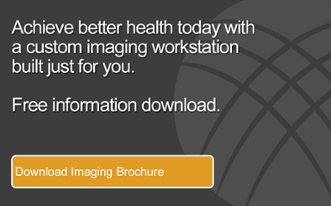 According to Dr. James Levine, a leading endocrinologist at Mayo Clinic and researcher on the health hazards of sitting, sitting for long periods of time is no good. Just take a look at the information below:
According to Dr. James Levine, a leading endocrinologist at Mayo Clinic and researcher on the health hazards of sitting, sitting for long periods of time is no good. Just take a look at the information below:
-
People who sit for long periods of time are more likely to become diabetic, and as for those who are currently diagnosed as diabetic, their diabetes becomes worse.
-
People who sit for long periods are also more prone to develop many types of cancers, including breast, prostate, and colon cancer.
-
Those who sit for six hours or more per day are more likely to develop depression, and as for those who already suffer from mental illness, they could see their conditions worsen.
To see more on the health hazards of sitting, you can visit my previously published blog.
The Hazards of Standing Too Much
On the other hand, according to Wikipedia and many other authorities, standing too long can cause the following:
Slouching: Slouching is often regarded as poor posture, and slouching too much can put harmful strain on the ligaments and joints in addition to the structure of the spine. This can lead to breathing problems as well as other negative health consequences.
Varicose veins: Gravity pulls blood downwards when you’re in a standing position. Our body uses specific functions (e.g. vasoconstriction) to help the blood flow upwards. When blood is pumped throughout the body, the valves within our veins work to keep the blood from moving backwards.
However, extended periods of standing causes the valves to weaken and sometimes even fail. Because nothing is keeping the blood from flowing backwards, gravity will cause the blood to flow into the lower part of the body, meaning the legs, feet, and ankles. The veins have to adapt to the surplus of blood, causing them to enlarge.
Additionally, the valves within the veins work most effectively in combination with muscle contractions that also help the blood move upwards. However, standing for prolonged periods strains these muscles and weakens the contractions.
Varicose veins can be related to:
-
Chronic heart disorders
-
Circulatory disorders
-
Hypertension
-
Pregnancy complications
Carotid Atherosclerosis: Cardiovascular disorders can also be a result from standing too much. Studies have shown that long periods of standing can alter the amount of blood that flows to the extremities. These hemodynamic changes can have negative impacts on the body, specifically because the blood collects and the circulating plasma volume is lessened. This can sometimes result in the progression of carotid atherosclerosis. This can eventually lead to coronary, carotid, and/or peripheral artery disease, and it can also lead to aneurysms.
Joint compression: Standing can place a large amount of stiff pressure on the hip, knee, ankle, and foot joints. Without movement, the synovial joints can tear because the stiffness doesn’t allow for the normal amount of lubrication and cushioning to take place. This can result in extreme pain, especially when it comes to walking or moving around.
Muscle fatigue: Muscles that are kept in a constant state of stress or pressure, such as standing, can become extremely fatigued, causing pain and swelling in the lower part of the body (back, legs, ankles, and feet).
Muscle exhaustion and musculoskeletal disorders are said to account for over one-third of all work-related injury and illness, according to the Occupational Safety and Health Administration. Studies have shown that muscle fatigue typically occurs after standing for five hours. This can be reduced by taking breaks to sit down periodically.
What is my point?
Both sitting and standing for long periods of time are detrimental to our health. Moderation is the key. It is as simple as your diet. For example, we say too much sugar is hazardous to our health (The American Health Association links excess sugar to obesity, type II diabetes and cardiovascular disease.), but with moderation, sugar is a benefit to our health. Similarly, when it comes to sitting or standing, it’s all about finding a healthy balance between the two.
The Remedy: Choose a height adjustable desk
-
Choose a desk that has a dual-surface sit to stand design with the monitor surface and keyboard surface able to move the full range of the height. This will allow your desk to evolve with your needs. Ten years ago, I had my monitors higher than my keyboard. However, now I have graduated glasses, and my monitor surface needs to be about twelve inches below my keyboard. Otherwise, I have to tilt my head back, and at the end of the day, I’ll be reaching for the ibuprofen due to a headache and neckache.
-
Choose a desk with advanced cable management. Over my 19 years of consulting and providing ergonomic desks to the healthcare industry, I can’t tell you how many times I have heard someone in a reading room say, “Don’t raise that desk above a certain point, or the cables will disconnect and the system will go down.” When you think about it, what is the sense of having a sit/stand desk if you can’t use it to travel its full range.
-
Choose a desk that will allow both surfaces to move from 23” to 50” because that range will accommodate the 5th percentile shortest seated person to the 95th percentile tallest standing person.
Moderation and alternating from sitting to standing multiple times during the day is the key. Another tip is to use your smart phone “stand apps” or Fitbit to remind you to sit or stand throughout the day. We are all very busy and forget to change positions, but we have the technology to remind us to use our resources. Here’s some more info on a couple of helpful apps:
- http://walking.about.com/od/Computer-Linked-Pedometers/tp/Sitting-Time-Apps-And-Inactivity-Monitors.htm
- http://lifehacker.com/5958072/standapp-reminds-you-to-stand-once-an-hour-and-gives-you-something-to-do
Some sit/stand desk manufacturers even have the software built into their desks to remind you to stand, and they can track your activity.
So, my point is to change it up and enjoy the healthy benefits of sitting and standing throughout the day. Your body will thank you!



